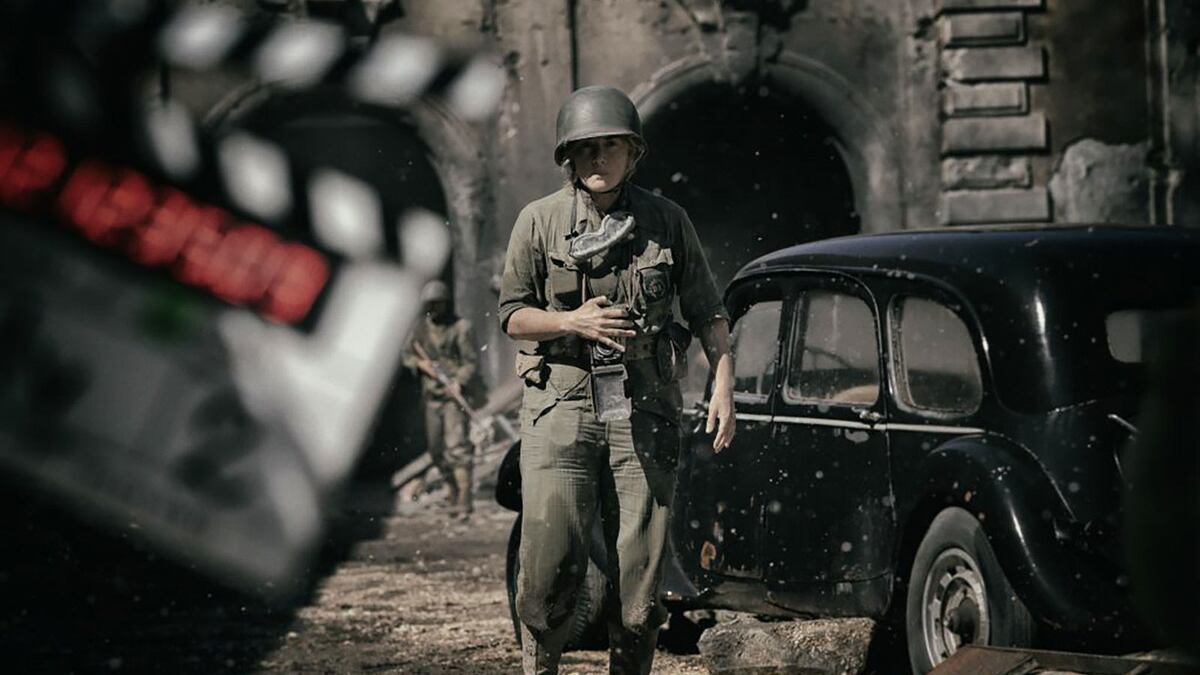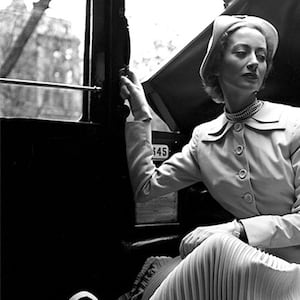TORONTO, Canada—Lee Miller was an iconoclastic model-turned-photographer who lived life without care for, or fear of, the hostile barriers and adversaries standing in her way. Lee, on the other hand, is a biopic that hews doggedly to formula, in the process reducing its subject’s tale to merely a standard-issue Hollywood prestige picture. Though stirringly headlined by Kate Winslet, it’s a by-the-books affair in almost every respect—including visually, which is all the more deflating given that it’s the dramatic directorial debut of celebrated cinematographer Ellen Kuras.
Having collaborated (often on non-fiction features) with numerous luminaries such as Martin Scorsese (No Direction Home: Bob Dylan, Rolling Thunder Revue: A Bob Dylan Story), Jonathan Demme (Neil Young: Heart of Gold), Spike Lee (Bamboozled, 4 Little Girls), Michel Gondry (Eternal Sunshine of the Spotless Mind, Be Kind Rewind), and Errol Morris (Wormwood), Kuras unquestionably knows what she’s doing.
As a result, it’s surprising to discover that Lee adheres to a conventional aesthetic template, full of warm light coming through living room windows, dusty haze filling the war-torn air, and plaintive piano and poignant orchestral compositions embellishing the stately action. All things considered, it's a handsome film, but only in the blandest way; there’s no trace of uniqueness or daring, this despite the fact that its protagonist was defined by those very traits.
Lee is framed by a 1977 chat between a young journalist (Josh O’Connor) and an older Lee. This isn’t the sole instance in which Kuras conspicuously ages one of her actresses, although Winslet’s phony looking make-up is less an issue than the corniness of this narrative device, in which Lee proclaims that all interviews are inquisitions and O’Connor’s questioner says that he just wants to understand Lee.
With a no-nonsense curtness that borders on harshness, Lee does her best to tell her tale, beginning in 1938 France, at which point she’s already moved on from her career as a model and taken a preoccupying interest in photography. Lounging about with her bohemian friends (including Marion Cotillard’s Solange d'Ayen) at a picnic where she goes topless—a sign of her radical confidence—she meets and falls for Roland Penrose (Alexander Skarsgård), and subsequently moves to England with him.
By 1940, Lee is pressing Vogue editor Audrey Withers (Andrea Riseborough) and her right-hand man Cecil Beaton (Samuel Barnett) to hire her, and her persistence pays off, only to have everything turned upside-down by the London Blitz. With a camera perpetually dangling around her neck, Lee begins documenting the metropolitan carnage and strikes up a partnership with David E. Scherman (Andy Samberg), who’s destined to become her trusty right-hand man.
Lee’s work impresses everyone and when she’s stymied from traveling overseas to cover the front-lines war effort, she uses her American citizenship to get the job done. There, she continues to be denied access and privileges due to her gender, but she endeavors onward, working her way up from medical tents to under-siege towns to concentration camps and, ultimately, into Hitler’s private apartment, which by 1945 has been transformed into a surreal lounge by occupying Allied forces.
Whether straight or gay, journalists or soldiers, American, French or British, sexist men are everywhere in Lee; even when walking through liberated Paris’ streets, she stumbles upon a Yankee grunt trying to rape an innocent woman. Nonetheless, Lee refuses to assume a marginalized role, dodging bullets in a chaotic skirmish and snapping her camera in horror at the countless bodies lining Nazi train cars and gas chambers. Such escalating nightmares are treated sensitively by Kuras, who refuses to unduly linger on her tale’s most harrowing aspects. Still, the proceedings’ restraint is also one of its great weaknesses, since all of this has been seen, heard and experienced before, and in far more disturbing and inspiring fashion.
Liz Hannah, John Collee, and Marion Hume’s script has a pesky habit of saying what it means, so that after witnessing a French woman’s shaved-head humiliation in a public square (the locals think she’s a collaborating harlot), Lee informs O’Connor’s character, “No one can tell you what it feels like—shame. There are different kinds of wounds—not just the ones you can see.” Later, discussing her decision to head to the German border in 1945, she remarks, “I’ve always been the last to leave the party.” In these and other instances, handholding is the principal dramatic directive.
If the film never totally dips into corniness, it gets awfully close, be it courtesy of a late revelation about O’Connor’s journalist that will surprise few and move even fewer, or Lee’s admission about a secret childhood trauma that handily explains why she’s so dedicated to both capturing the truth and bringing it to light.
Lee fleetingly comes alive when Lee and Scherman visit Hitler’s former abode and, in a moment of impulsive inspiration, the photographer commandeers the Führer’s bathroom, hops nude into his tub beside his portrait and other trinkets, and has her picture taken by Scherman. It’s an act of defiant rebelliousness that’s bracing precisely because it feels spontaneous, and Kuras wisely refrains from having the elder Lee detail her motivations. Unfortunately, such wildness is short-lived, set aside in favor of mechanical scenes involving Lee railing against Vogue for not publishing her Buchenwald and Dachau camp photos and, in 1977, questioning O’Connor’s scribe about his own past.
Winslet’s Lee is tireless and prickly, acerbic and compassionate, ambitious and selfless, and never wholly uninteresting. In a sturdy performance, the Oscar-winning actress plays her as a tough-minded pioneer who didn’t take no for an answer and felt a profound commitment to illuminating the world’s darkest corners. Lee, however, is straightforward to a fault, thereby sapping Lee and those in her life—whether it’s Samberg’s peripheral Scherman, Skarsgård’s loving painter-spouse, or Cotillard’s perfunctory d'Ayen—of any enlivening intricacy. Where passion, fury, agony and thorniness are needed, only reputable pronouncements, stock scenarios and muted emotions are provided.
By playing it safe and respectable, Lee comes across as a well-meaning celebration of a commendable trailblazer—and thus the type of movie that Academy voters love. Somehow, one suspects the shooting-from-the-hip, bullshit-averse Lee would feel less kindly about it.
Liked this review? Sign up to get our weekly See Skip newsletter every Tuesday and find out what new shows and movies are worth watching, and which aren’t.







